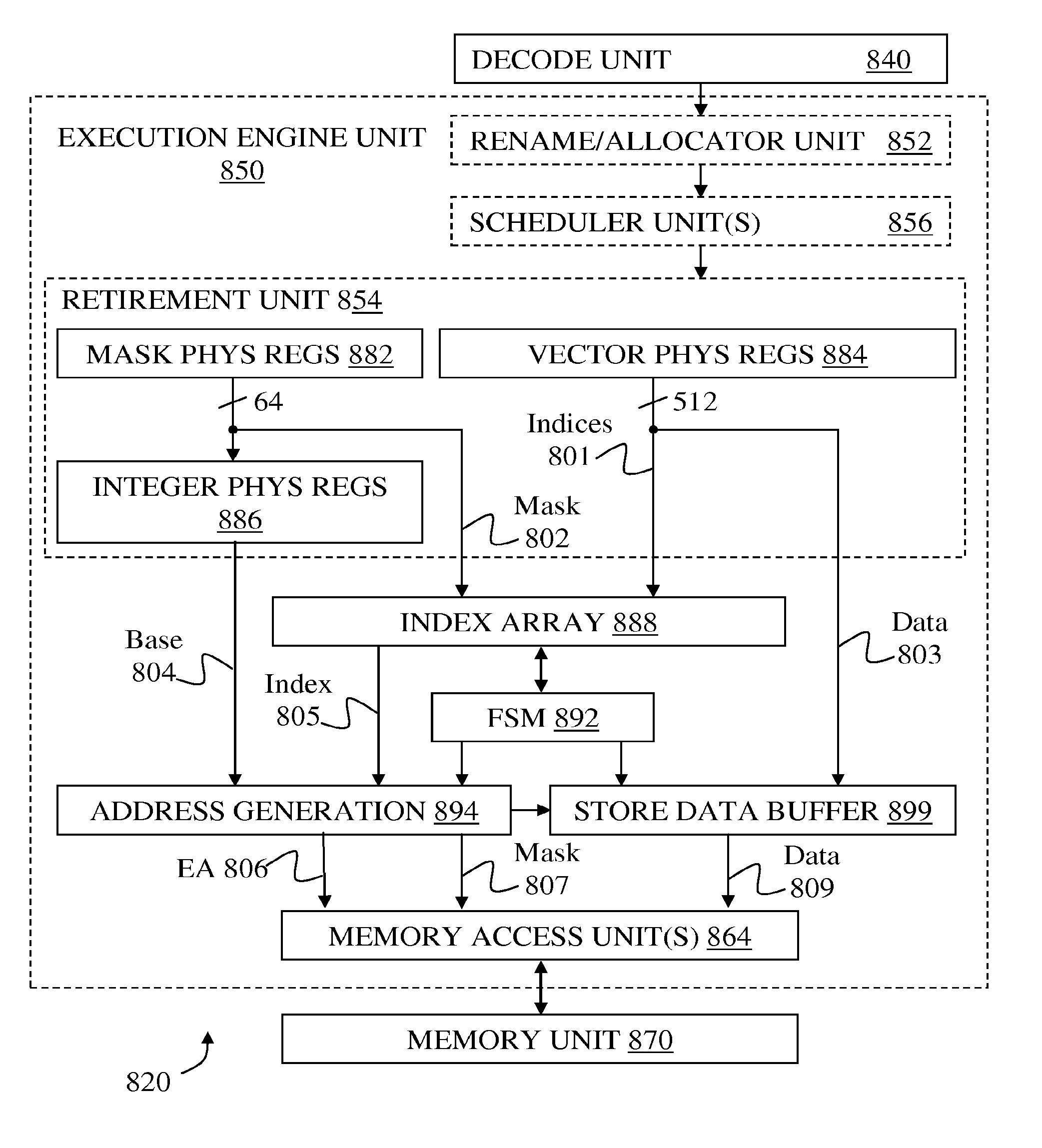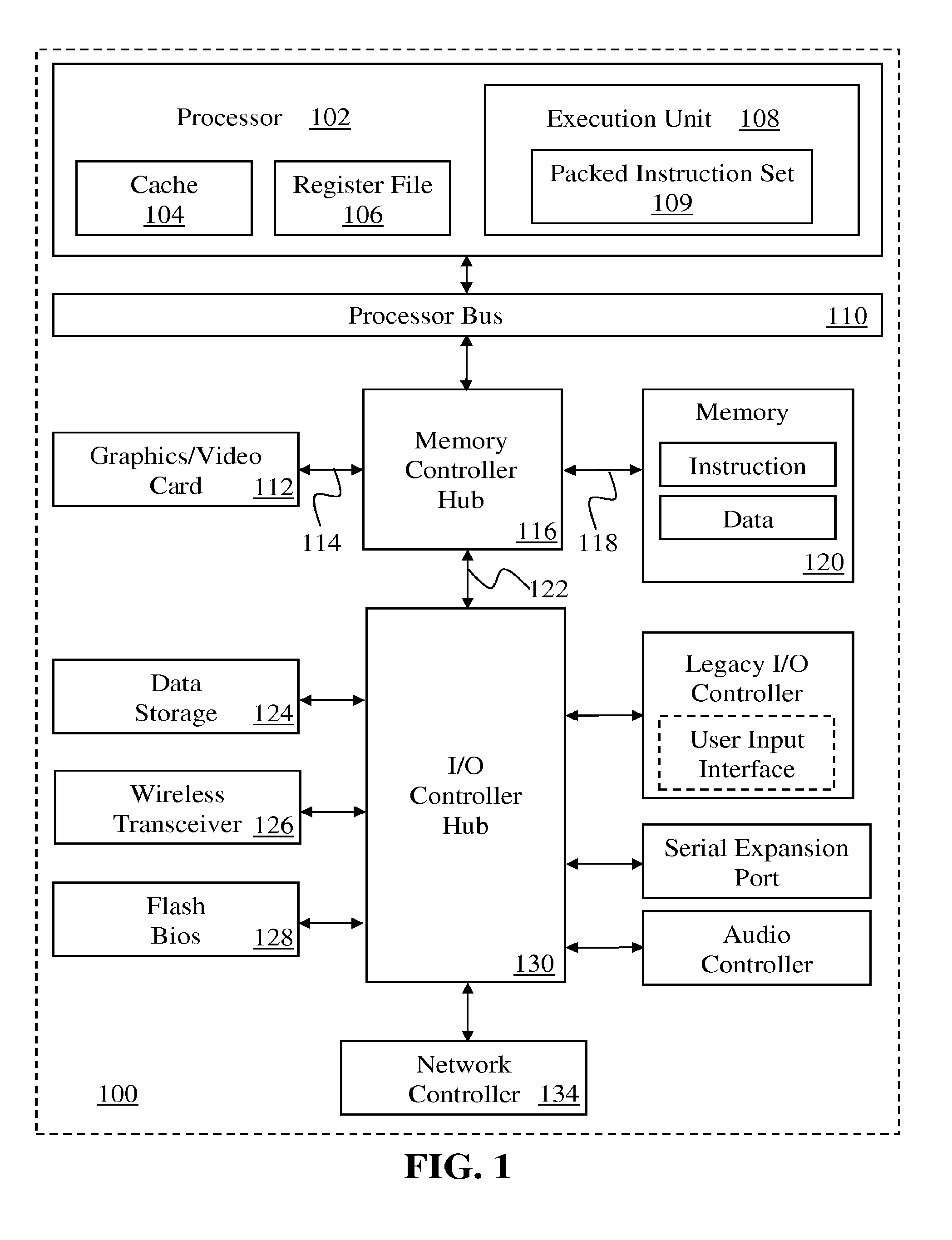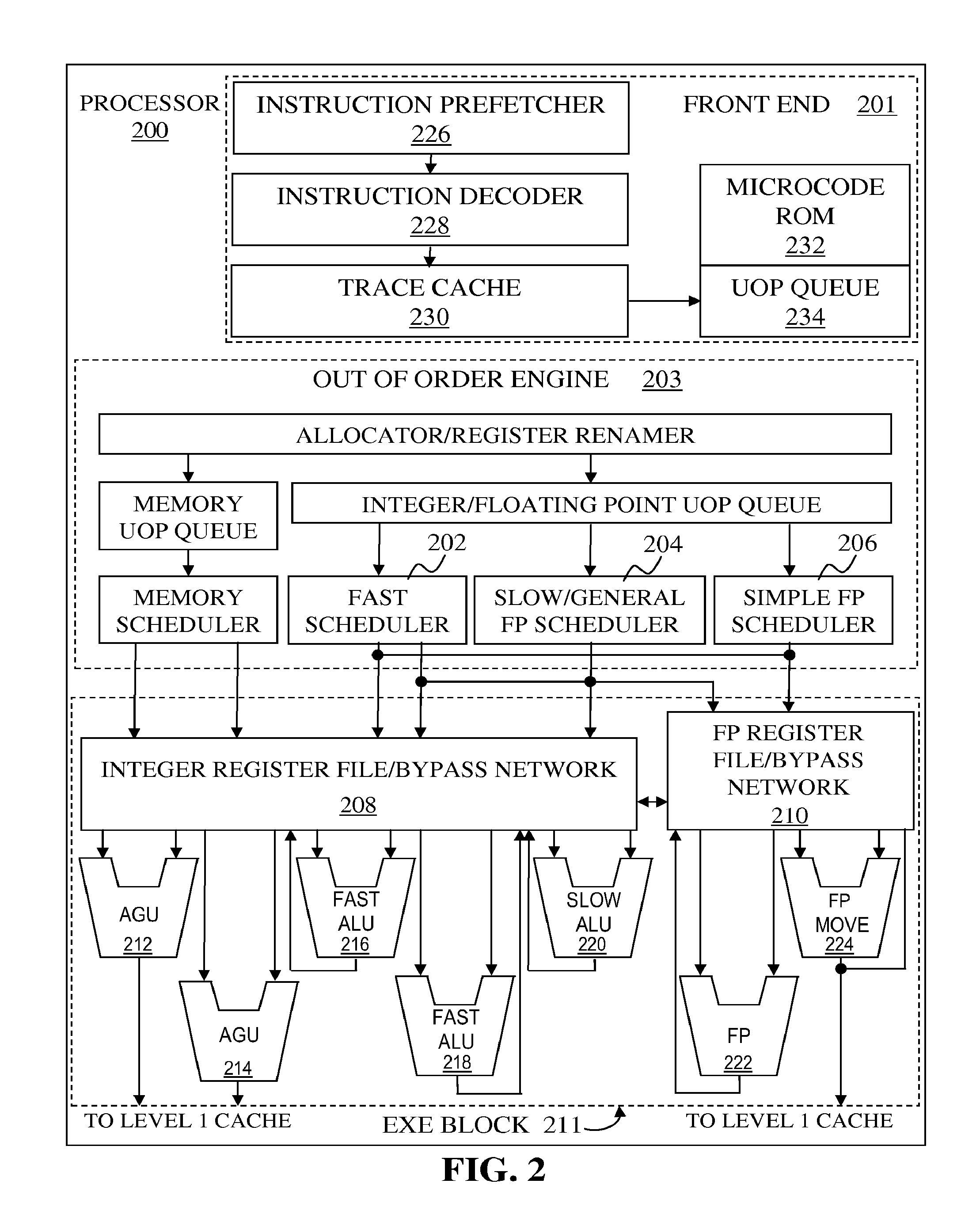Scatter using index array and finite state machine
a finite state machine and index array technology, applied in the field of computing and/or communication, can solve the problems of limiting performance advantages, incongruity, or non-contiguous state of the machine, and complex memory access,
- Summary
- Abstract
- Description
- Claims
- Application Information
AI Technical Summary
Benefits of technology
Problems solved by technology
Method used
Image
Examples
Embodiment Construction
[0033]Gather and scatter operations rearrange stored data elements for use by SIMD hardware. Gather operations read a set of data elements from memory and pack them together, typically into a single register or cache line. Scatter operations perform the reverse operation by dispersing data elements in a packed data structure to a set of non-contiguous or random memory locations. In addition to the delays associated with accessing one or more levels of memory, interruptions during the gather or scatter operations, e.g., due to repeated page faults, may significantly increase the overhead associated with these operations since any progress made by the operation is typically discarded prior to returning to the beginning of the operation. U.S. Pat. App. No. 2009 / 0172364, portions of which have been incorporated herein, discloses gather, scatter, and prefetch implementations which, when interrupted, may save the state of the operation. Thus, when the operation is restarted, a repeat of t...
PUM
 Login to View More
Login to View More Abstract
Description
Claims
Application Information
 Login to View More
Login to View More - R&D
- Intellectual Property
- Life Sciences
- Materials
- Tech Scout
- Unparalleled Data Quality
- Higher Quality Content
- 60% Fewer Hallucinations
Browse by: Latest US Patents, China's latest patents, Technical Efficacy Thesaurus, Application Domain, Technology Topic, Popular Technical Reports.
© 2025 PatSnap. All rights reserved.Legal|Privacy policy|Modern Slavery Act Transparency Statement|Sitemap|About US| Contact US: help@patsnap.com



